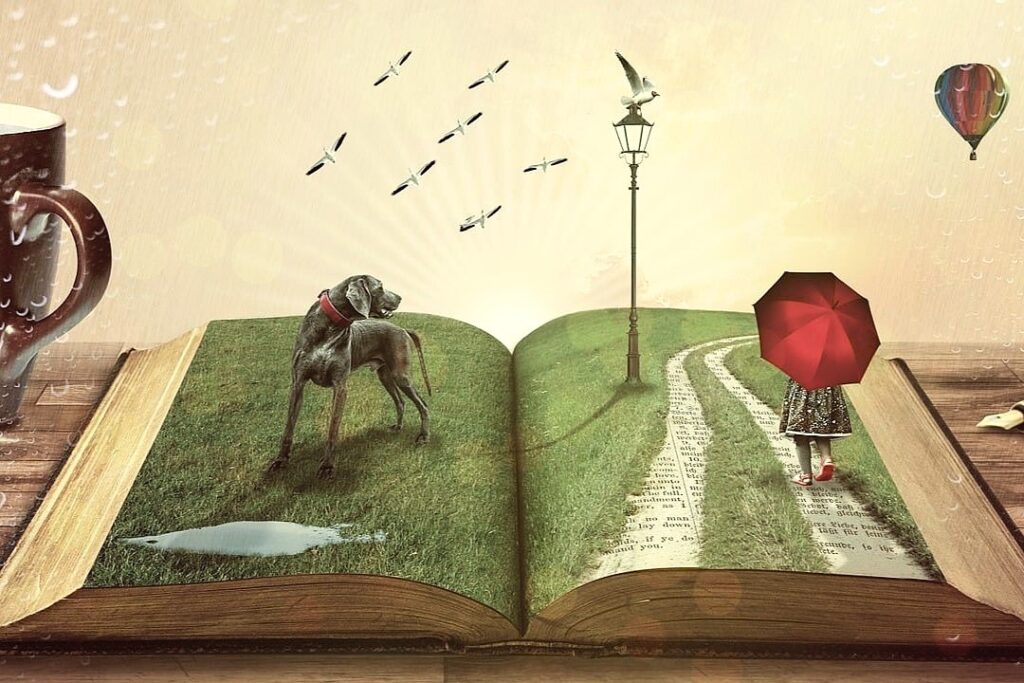Movies and novels are distinct tools that each convey meaning and emotions in unique ways. Contrary to movies, novels are about the journey, not the destination. The medium speaks for itself–let it take the lead.
A novel is about the journey; a film is about the destination. With no time constraints, novels are free to explore various pathways and detours, adding depth to the experience. You don’t read a novel in one sitting. Each reader moves at their own pace, returning to the same world over multiple sessions, enjoying the story without the need to rush to the end. Personally, the more I enjoy a book, the more time I take to read it. I want to stretch the experience, pause at inspiring moments, imagine different outcomes and reflect on the story as I go about my day. A film, on the other hand, doesn’t allow such flexibility. It operates within a time limit. The plot needs to be as tight as possible to meet the 2-hour constraint in time and hold viewers attention for the whole duration. Watching a film in two or more sittings disrupts the flow and continuity.
In novels, plot is much less important; it is secondary to creating a rich world with memorable characters that readers are eager to revisit after a long day. Novels let characters live in a universe parallel to ours, facing relatable human struggles alongside extraordinary events. Multiple plotlines, subplots, and a large cast with complex relationships and backstories can flourish within a novel’s extended timeframe. Authors can deviate from the main storyline to explore subplots or character backstories, connect directly into a character’s stream of consciousness, and even write stories within the story–my favorite novel-like feature. This narrative flexibility is unique to the novel form.
Words vs. Images
In a novel, the elements of a scene are described in sequence: first the background, then the atmosphere, colors, sounds, and finally the lighting. In movies, all this information is conveyed simultaneously in a single image: images have this capacity to compress a ton of information at once. In film, the sequence of images tells the story: a close-up of an actor’s micro-expression can communicate intense emotion instantly. Theatre relies heavily on dialogue, while novels possess a unique power to reveal a character’s internal world—achieving a level of intimacy that no other medium can replicate.
Art Imitates Art, Not Life
Many contemporary novels read like TV show transcripts, as cinema and television culture increasingly influence literature, replacing direct inspiration from life itself. As a result, many cinematic and literary works feel staged and repetitive, missing life’s unique quirks and peculiarities.
Where Movies and Novels Overlap
The contrast between the two mediums becomes clear when books are adapted into films. Good books often make bad movies. Awkward voice-over narration, for instance, can feel like a shortcut when visuals alone can’t capture what words express in the book. Another indication is the compression of story time to fit a film’s runtime, which can make events feel rushed, sacrificing depth and detail.
Conversely, movies or TV series inspire bad novels that lack the inner monologue and evocative description intrinsic to the literary universe. In an attempt to replicate the cinematic universe, these novels read like action scripts, where a protagonist moves through a series of events in an undefined setting. The story timeline is linear and rigid, without pauses to allow for characters’ introspection, flashbacks and future-looking to inform present decisions—elements essential to literary storytelling and crucial for deeper character development.
